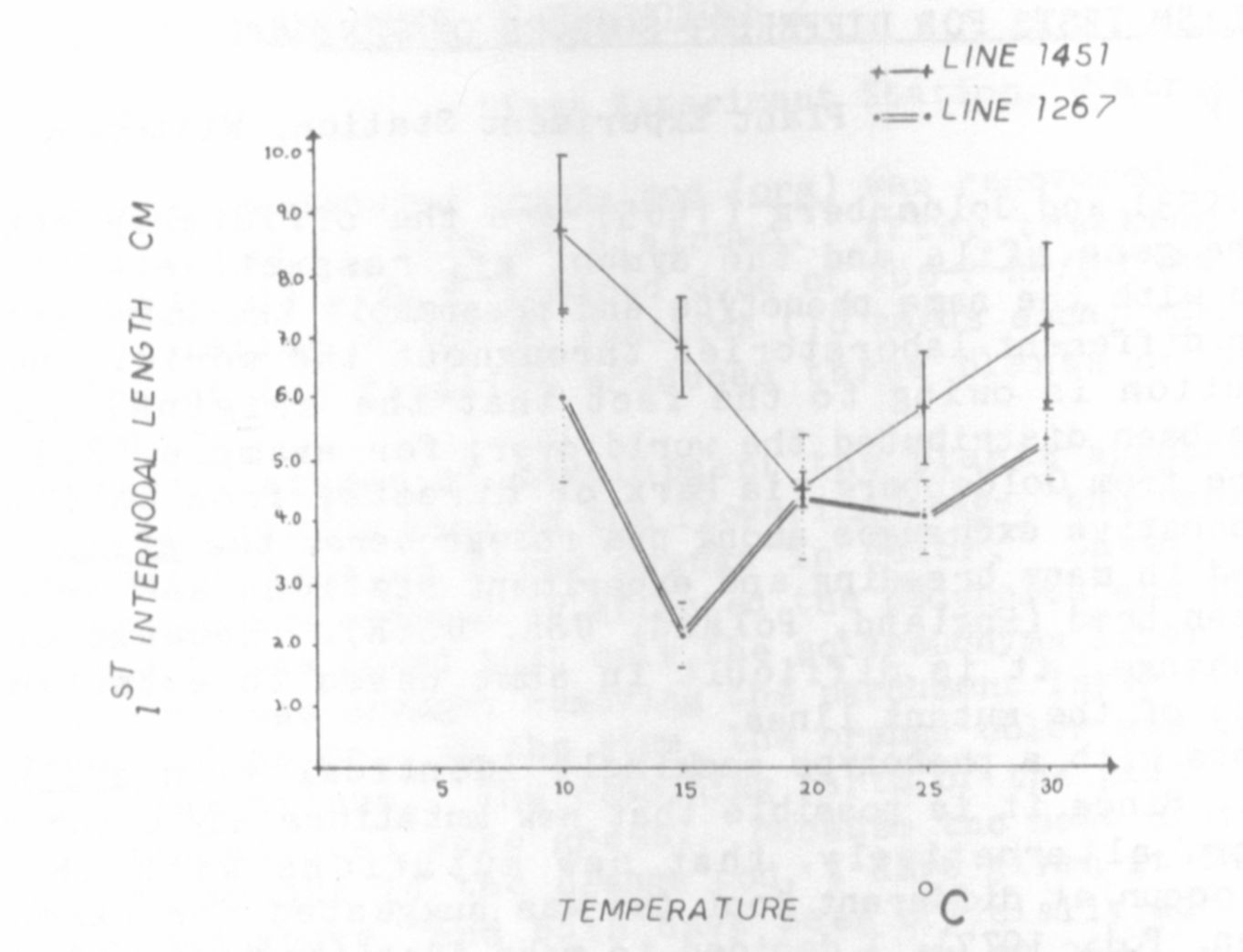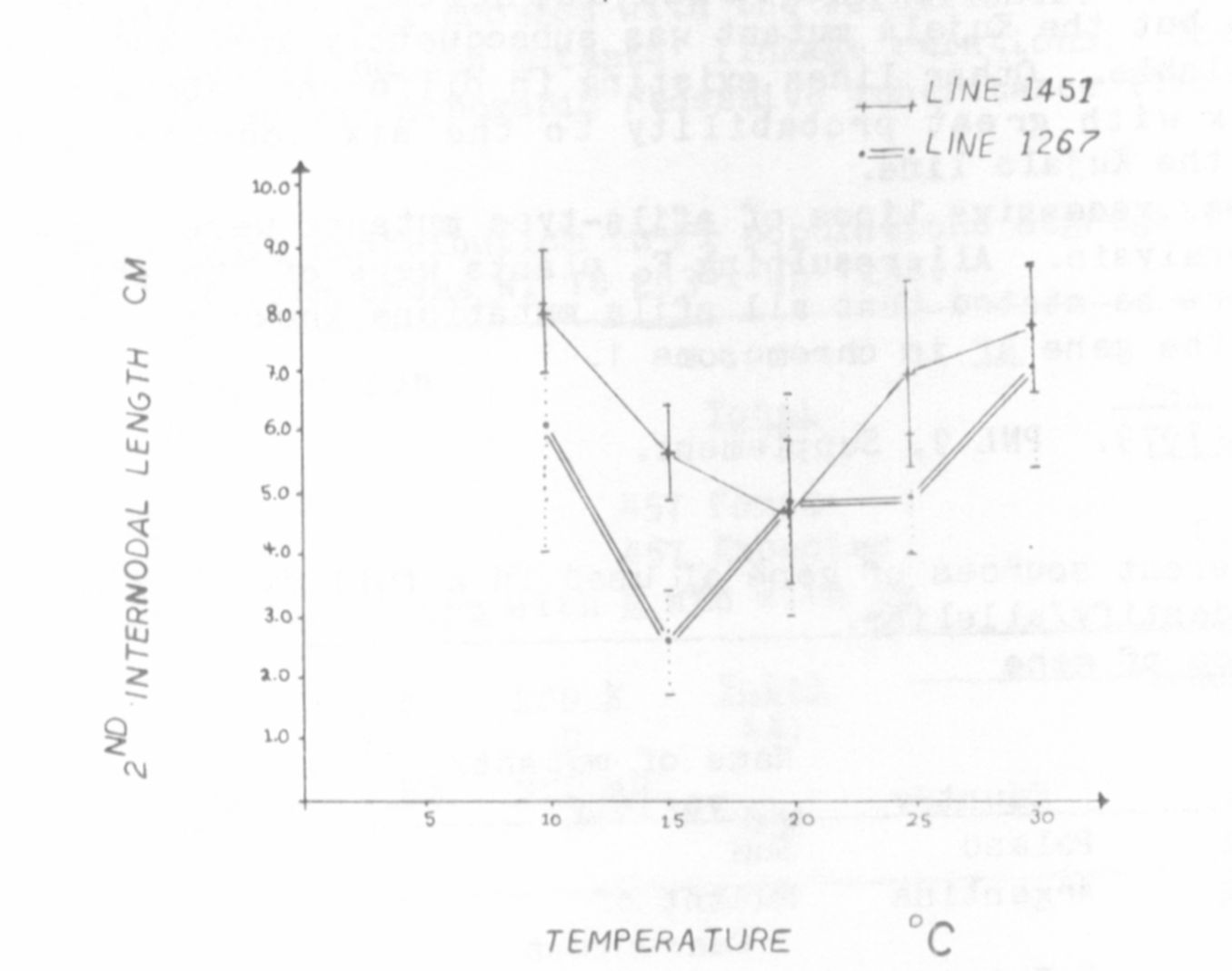A SURVEY OF THE EFFECT OF GENETICS AND TEMPERATURE OF GERMINATION ON
LENGTHS OF THE FIRST AND SECOND INTERNODES OF ETIOLATED PEA SEEDLINGS
Seguin, S. and C. Nozzolillo Department of Biology
University of Ottawa, Canada
Germinating seeds of Pisum sativum buried at varying depths in the
soil will elongate until they reach the surface. Light is the impor-
tant factor influencing elongation. In fact, if no light reaches the
seedling, it will elongate until all food reserves in the cotyledons are
utilized or even cease before complete depletion has occurred (1). This
phenomenon, etiolation, is characterized by a very rapid stem elongation
and by the suppression of leaf expansion (2). A survey of 34
Weibullsholm lines* was made to assess the extent to which genetic dif-
ferences might affect etiolation.
The experimental procedure was as follows: The seeds were
surface-sterilized with a 20% solution of sodium hypochlorite (Javex)
for 5 minutes, then rinsed well. Following imbibition in distilled
water for 24 hrs in darkness at 15±1 C, the seeds were placed on a shal-
low layer of heat-pasteurized, moistened sand in aluminium soil moisture
cans (diam 9.0 cm). Each can was covered with a 48-oz Juice can (diam
10.5 cm. ht 17.5 cm) to prevent light penetration, and put in a
temperature-controlled (15±1 C) growth chamber. After two weeks,
seedling development was checked using a dim green safety light [a small
amount of green light has no significant effect on the growth of
dark-grown seedlings (1)]. Those with fully developed first and second
nodes were removed and measured. All. others were allowed to continue
their development and were checked each following week until all the
germinated seedlings had reached the appropriate stage of development.
The effects of temperature on etiolation were examined with two of
the Weibullsholm lines (WL-1451, WL-267) chosen because of the dif-
ferences shown in their internodal lengths at 15 C and their fairly high
germination percentage. The experiments (imbibition and growth) were
done in growth chambers where the temperature was maintained at 5, 10,
20, 25, and 30 C respectively.
The results of the survey, expressed as mean value + standard
deviation, are summarized in Table 1. There was wide variation among
lines, and lengths bear little or no relationship to whether the lines
were "dwarf" or "tall" when grown in light. Some lines (eg. 58, 369,
1088, 1267, 1366, 1391 , 1508) had very short internodes while others
(eg. 1415, 1416, 1451 , 1467, 1570, 1754) had much longer internodes.
The relationship between the first and second internode varied also. The
two were almost the same length In some lines (eg. 58, 1570); in others
they were very different. For example, lines 5 and 1227 had a longer
first internode while in lines 1415, 1416, 1545, and 1614 the second in-
ternode was longer.




